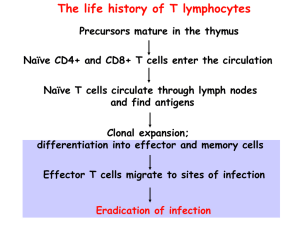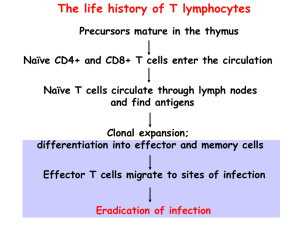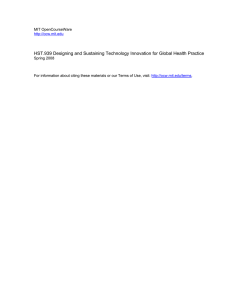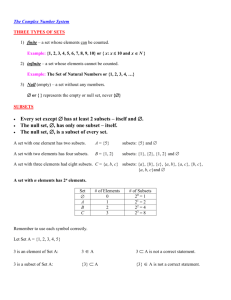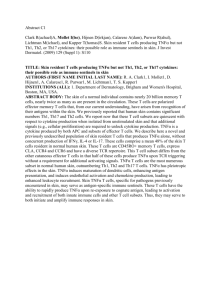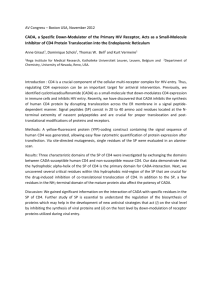Graduate Program in Molecular Cell Biology:
advertisement
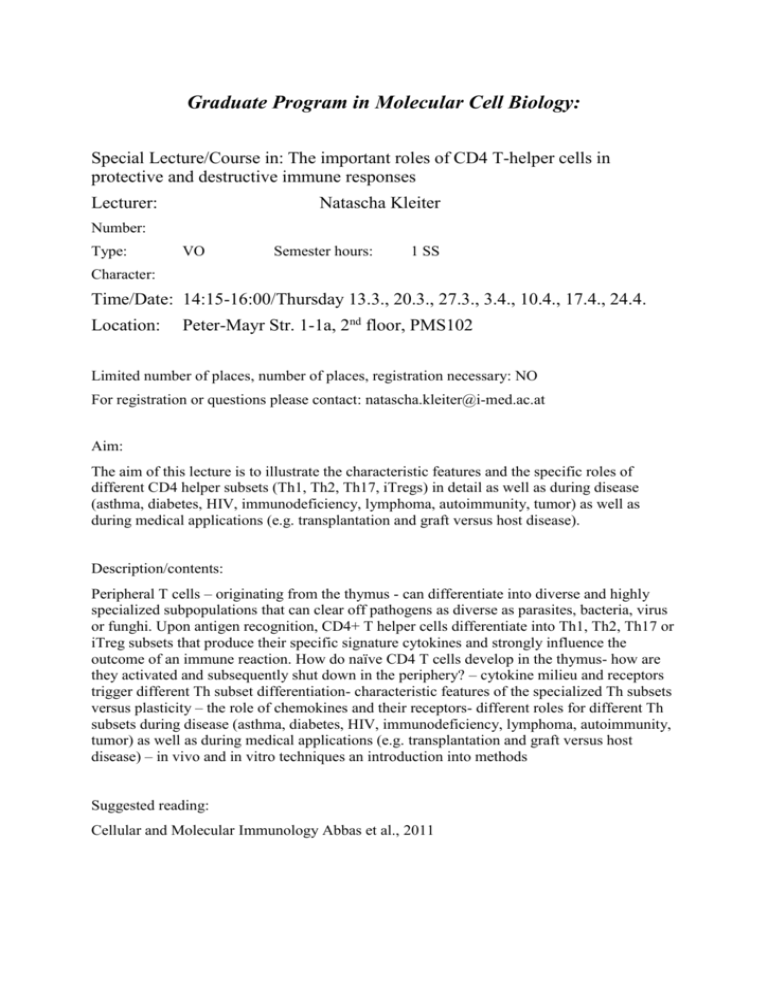
Graduate Program in Molecular Cell Biology: Special Lecture/Course in: The important roles of CD4 T-helper cells in protective and destructive immune responses Lecturer: Natascha Kleiter Number: Type: VO Semester hours: 1 SS Character: Time/Date: 14:15-16:00/Thursday 13.3., 20.3., 27.3., 3.4., 10.4., 17.4., 24.4. Location: Peter-Mayr Str. 1-1a, 2nd floor, PMS102 Limited number of places, number of places, registration necessary: NO For registration or questions please contact: natascha.kleiter@i-med.ac.at Aim: The aim of this lecture is to illustrate the characteristic features and the specific roles of different CD4 helper subsets (Th1, Th2, Th17, iTregs) in detail as well as during disease (asthma, diabetes, HIV, immunodeficiency, lymphoma, autoimmunity, tumor) as well as during medical applications (e.g. transplantation and graft versus host disease). Description/contents: Peripheral T cells – originating from the thymus - can differentiate into diverse and highly specialized subpopulations that can clear off pathogens as diverse as parasites, bacteria, virus or funghi. Upon antigen recognition, CD4+ T helper cells differentiate into Th1, Th2, Th17 or iTreg subsets that produce their specific signature cytokines and strongly influence the outcome of an immune reaction. How do naïve CD4 T cells develop in the thymus- how are they activated and subsequently shut down in the periphery? – cytokine milieu and receptors trigger different Th subset differentiation- characteristic features of the specialized Th subsets versus plasticity – the role of chemokines and their receptors- different roles for different Th subsets during disease (asthma, diabetes, HIV, immunodeficiency, lymphoma, autoimmunity, tumor) as well as during medical applications (e.g. transplantation and graft versus host disease) – in vivo and in vitro techniques an introduction into methods Suggested reading: Cellular and Molecular Immunology Abbas et al., 2011


